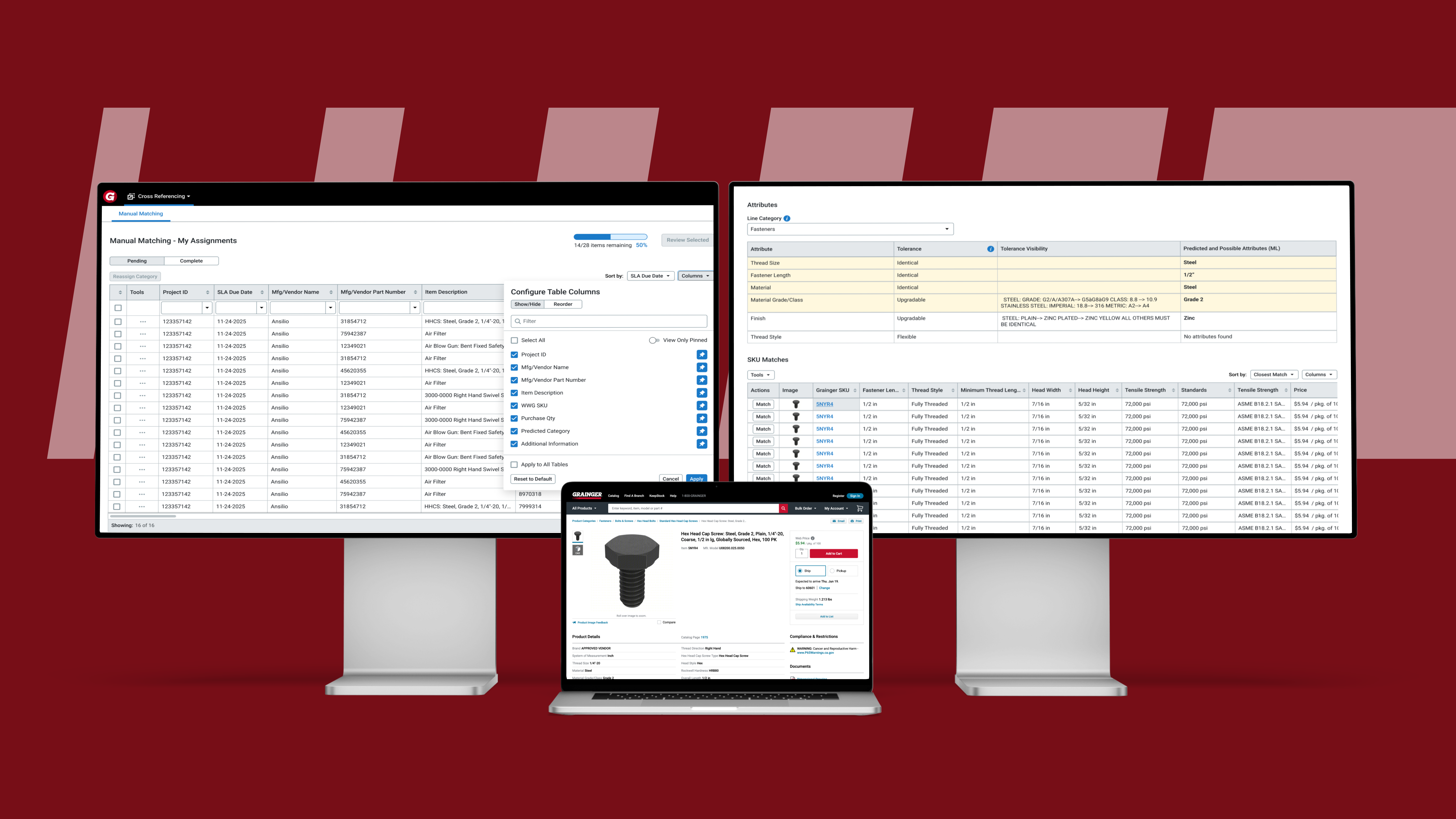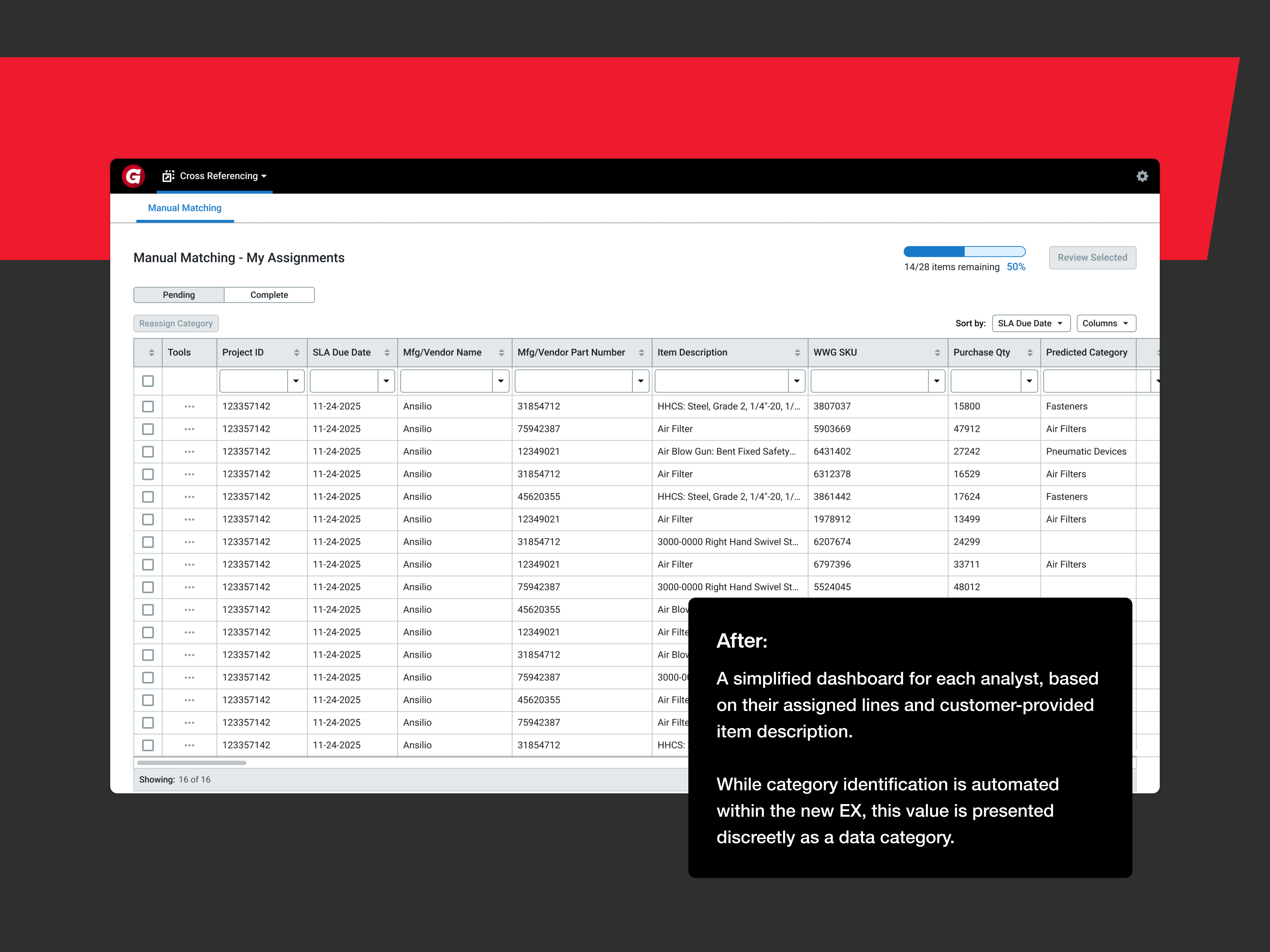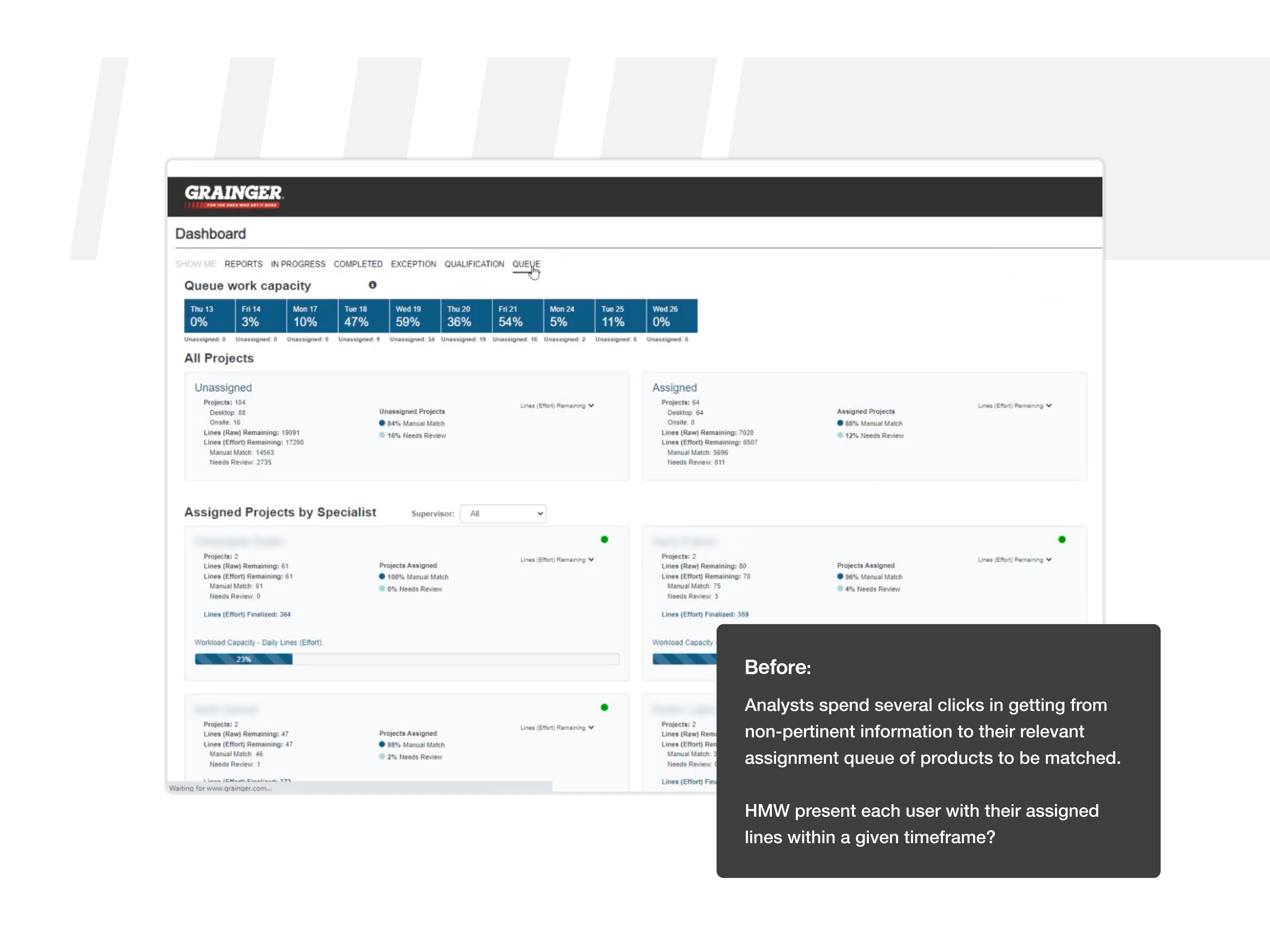Grainger
Harmonizing AI + HITL workflows for industrial product matching
Grainger's business was described to me as such: imagine walking into a local Home Depot for tools and supplies, to build a nuclear power plant.
Grainger's North America division services highly complex operations of large corporate, government, and institutional customers by providing over 30 million Maintenance, Repair, and Operating (MRO) products through curated digital experiences. This capability appears as convenient as ordering through an e-commerce site, but goes as deep as logistics management from supplier to customer.
I joined Grainger's Workstation UX team to help service Grainger Cross Referencing teams across its global distribution network. I led design delivery and facilitated UX strategy of products that helped analysts find the right product fit for customers' manufacturing requirements.

Aligning automation with human decisioning
At the time, Grainger's processes of finding the correct product based on a customer's requirements required detailed analysis across several analysis tasks, consuming time and resources of Cross Referencing specialists. The impact is large as these products ensure success with the customer's needs, for example the right order for 50,000 fasteners could mean success or failure of a construction project.
While a technical solution seemed clear to automate identification of the best product based on properties, a human-in-the-loop (HITL) is essential to authorize that product's selection. With this in mind, I used a human-centered design approach to identify the scope of an MVP that would combine ML attribute classification and ranking with an employee experience to better identify critical and complementary data points in a given workflow.
This required a deep understanding of an analyst's workflow and challenges, captured through artifacts in workshopping, demonstrations, and facilitation.


With a greater picture of the "what" and "how", I was able to create and validate the design of a solution delivering information that a CRS analyst user can act on.
One big consideration I'd given to this project early on was the fact that analysts needed quick and familiar ways of digesting large swaths of information, thus being able to act on it faster. I had to retain many of the mental models defined for legacy tooling, providing anchors to new information provided in the experience.


